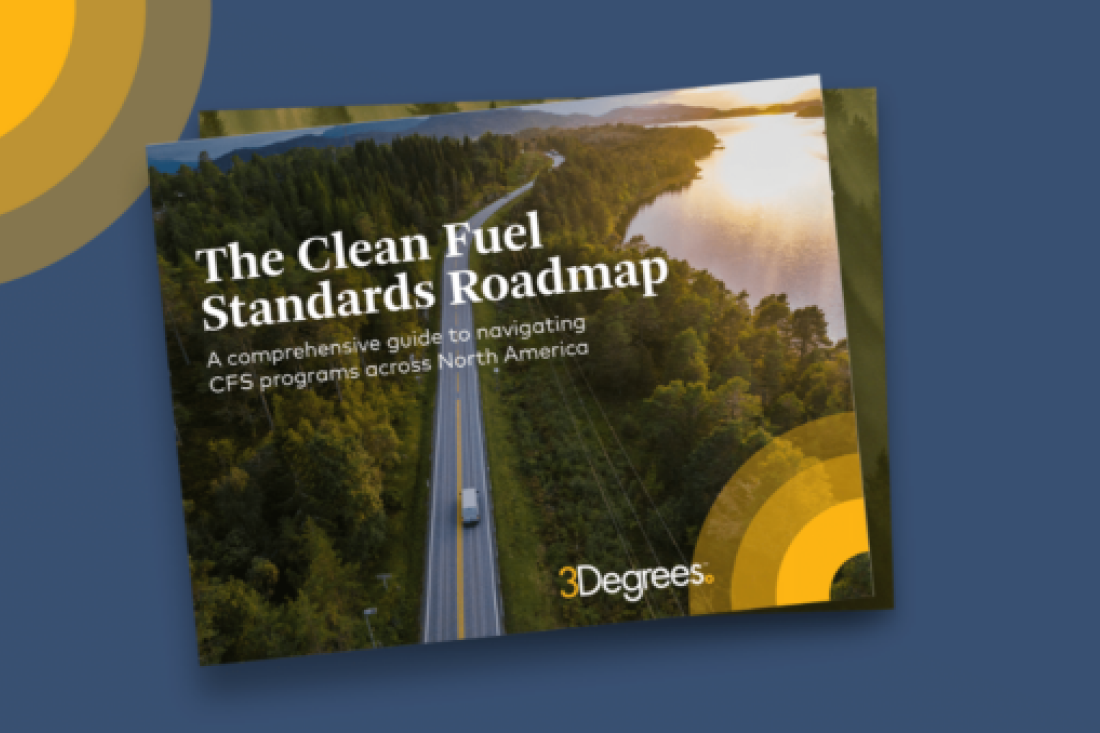Transportation
Oregon’s Clean Fuel Program (CFP) FAQs

What is the Clean Fuels Program (CFP)?
The Oregon CFP is a statewide market-based incentive (MBI) program that aims to reduce the carbon intensity (CI) — the measurement of lifecycle greenhouse gas emissions — of transportation fuels in all stages (extraction, refining, production, dispensing, or combustion). The program established specific targets for the average CI of both gasoline and diesel each year through 2035, when it requires a 37% decrease in CI compared to the baseline year 2015. Oregon’s CFP requires that in-state producers and out-of-state importers of fossil and renewable fuels, with certain exemptions, participate in the program. Generally speaking, fossil fuel producers generate deficits while renewable fuel producers generate credits. Functioning similarly to the LCFS in California, the CFP requires that these deficit holders must retire credits they generate themselves or purchase credits from other entities.
What is the status of the CFP program?
The CFP was established in 2016 and has been modified several times, most recently in late 2022. Low carbon fuel use is increasing, and fuel producers are taking action to decrease the CI of their fuels. The current program targets continue to increase annually through 2035. After 2035, the final CI target that represents a 37% reduction must continue to be met. There are currently no planned changes to the program.
What is a CFP credit?
Producers of fuels with CIs that are lower than the annual standard generate credits, while producers that produce fuels with CIs higher than the annual standard generate deficits. Credits can be sold to deficit holders, creating a credit market. The revenue generated from the sale of those credits can then be further invested into projects that lower greenhouse gas emissions. The sale of credits provides a financial incentive for fuel suppliers to source and supply the lowest carbon fuels to customers in Oregon.
What kinds of vehicles can generate credits?
There are a wide variety of vehicle and fuel applications that can generate credits. Any vehicle that would most commonly be using fossil fuels but is instead using a fuel with a lower carbon intensity (CI) can generate credits. Electric transportation applications are a common source of LCFS credits. Examples of electrified vehicle credit generation opportunities include:
- Battery electric and hydrogen fuel cell electric forklifts
- Passenger Cars via EV campus charging and public DC Fast Charging
- Electric buses and shuttles
- Electric Yard trucks/tractors and other off road cargo handling equipment
- Electric cargo handling equipment
- Electric cargo and delivery vans and box trucks
- Battery and hydrogen fuel cell electric medium and heavy duty trucks and tractors
- Shore powered refrigerated trailers run on electricity
Does low-carbon fuel usage need to occur in Oregon to be eligible?
Yes, the CFP program applies to any transportation fuel that is sold, supplied, or offered for sale in Oregon. However, other states have similar market-based incentive programs that allow credits to be generated via the use of low carbon fuels.
Are there requirements on how the revenue from selling CFP credits is spent?
For utilities and certain non-profit organizations that participate in the program, CFP revenue generated from EV charging must be spent to further benefit vehicle electrification. Most entities generating credits do not need to document how credit revenue is spent.
What kind of fuels can generate CFP credits?
Many low-carbon fuels are eligible to generate credits. Electric vehicle charging using renewable electricity generates credits at the highest rate, but even electric charging using standard grid electricity creates a strong financial return. Other low-CI fuels generating credits include low-CI hydrogen, ethanol, biodiesel, renewable diesel, compressed natural gas and biogas (CNG), and liquefied natural gas and biogas (LNG).
3Degrees specializes in helping our partners maximize the value available through the program for the use of electricity and low-CI hydrogen, as well as helping owners of public charging and hydrogen fueling infrastructure generate and sell credits.
How do you get the most out of the CFP?
For EV charging, matching electricity dispensation with high quality renewable energy certificates can significantly increase CFP revenues by substantiating lower CI electricity than the grid. Lower carbon power can also come from onsite renewable sources, like solar panels.
Another key component of maximizing CFP value is aggregating credits. Entities generating a small number of credits may need to take a price discount in the market because the standard transaction size is thousands of credits. Working with a partner can improve selling power and ensure maximum credit revenue is realized quickly.
Suggested insights

Download this guide to learn the role of CFS programs in driving down transportation emissions

Watch Dave Meyer, Director of Transportation Markets, explain how to assess the financial opportunity of Clean Fuel Standard programs for your organization and more.

Learn more about the regulations aim to reduce the life cycle CI of transportation fuels and promote cleaner fuel alternatives.
Get in touch
Learn more about how your organization can leverage financial incentives available through Oregon’s CFP
